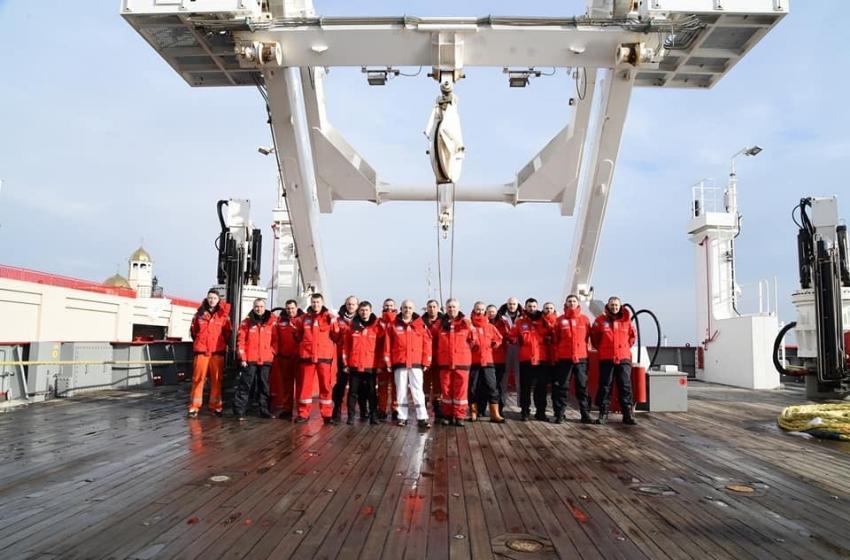On January 28, the flagship of the Ukrainian research fleet, the icebreaker "Noosphere", set off on its maiden voyage to Antarctica.
Photo: National Antarctic Scientific Center of Ukraine Facebook page
The date - January 28 - was not chosen by chance, and after all, this day in 1820 is considered the date of the discovery of Antarctica. Director of the National Antarctic Research Center Evgeniy Dikiy said this at an event dedicated to this event.
The vessel crew consists of 26 people - Ukrainian and foreign specialists who previously worked for the British Antarctic Survey. Scientists will also board it to conduct all the planned research along with the icebreaker to the Vernadsky Research Base.
First, the ship will have a long road to Chile, where the second group of scientists will board it and the team of the 27th Ukrainian expedition of polar explorers. Further through the Drake Strait, the icebreaker will also deliver cargo: from a year's supply of provisions to building materials and equipment.




It is planned to continue the oceanographic research started by Ukraine in March-April 1997 and 1998 on the research ship "Ernst Krenkel". The works are planned at three landfills: a landfill near the Argentine Islands, near Vernadsky (14 stations), the South Scottish landfill (21 stations in 7 sections), the South Orkney landfill (36 stations in 7 sections).
These areas have complex hydrophysical conditions that form the system of water masses of the oceans of the Southern Hemisphere and high biodiversity. Here are the main migration routes of krill, fish, and whales.
During the passage, the icebreaker will conduct numerous scientific studies. Numerous biological studies are planned: the study of the content of global pollutants, such as mercury in bottom sediments, as well as geological, geospace and radio-ocean studies. In particular, high-precision radio receivers onboard will evaluate the parameters of ocean waves the direction and speed of currents within a radius of tens of kilometers from the ship. Together with the indicators of the ship's weather station, this will improve the models of sea surface disturbances under different weather conditions and better predict them.

The flight will also open up new opportunities for the direction of powerful lightning, as the ship on its way to Antarctica will move near the main centers of world storms - African and South American. Thanks to the supersensitive LNG magnetometer on board, scientists will be able to monitor thunderstorms from Antarctica, as they have done for the past twenty years, and conduct research directly in tropical latitudes. This will significantly improve the accuracy and quality of global direction findings.
It is planned that "Noosphere" will cross the Antarctic Circle for the first time, reach Marguerite Bay on the western side of the Antarctic Peninsula, and after the completion of the scientific program, it will pick up the participants of the 26th expedition, which has been working at the Akademik Vernadsky station for almost a year, then through Chile and the Falkland islands will head for Odessa.





















